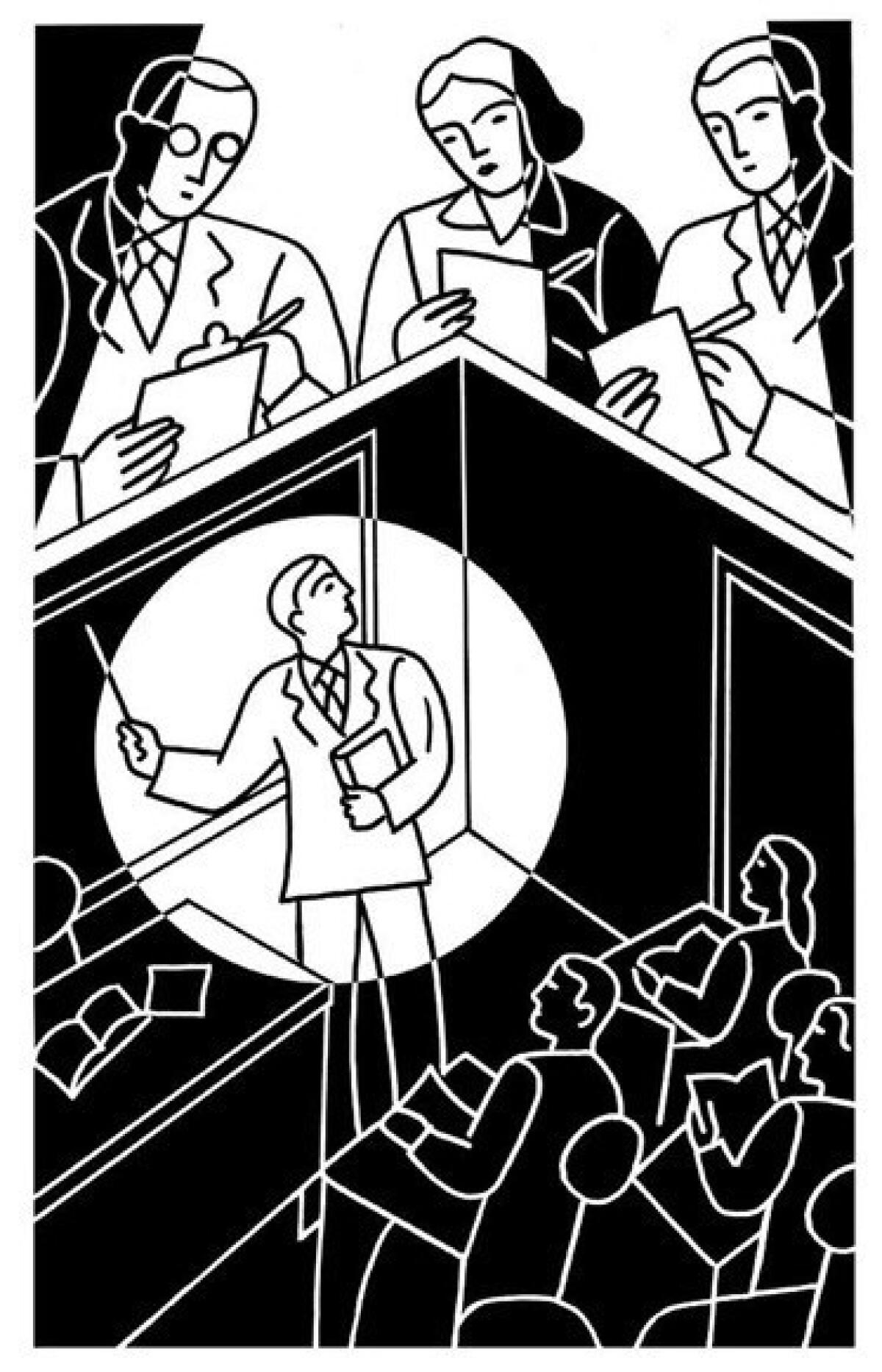A smarter way to grade schools

- Share via
While the Obama administration is putting increased emphasis on standardized tests to measure teachers and schools, California is moving in the other direction. A new law will limit how heavily the annual standards exams can count toward a school’s score on the state’s Academic Performance Index.
We think California has the better approach. Though the tests, which measure whether students are at grade level in various academic subjects, have value as an objective measurement of student progress, they were never intended to become the sole criterion by which good education is measured, and they shouldn’t be. In too many classrooms, the result has been a creativity-stifling tendency to drill students for the multiple-choice tests.
Up to now, state officials have aggregated each school’s test results into a simplified API number that can range from 200 to 1,000, with a score of 800 meaning that the school has met the state’s target for students’ proficiency. But under the law signed this year by Gov. Jerry Brown, the test results will count for only 60% of the API score starting in the 2015-16 school year.
That’s fine, but what about the other 40%? The problem with SB 1458, by Senate President Pro Tem Darrell Steinberg (D-Sacramento), is that it leaves it to the California schools superintendent and the Board of Education to figure that out. The law is expected to accomplish one important goal: Finally, the state will have to include dropout rates in the API calculation, something it was supposed to do all along but ignored.
As for the rest, no one knows. The governor is responsible for the vagueness; he vetoed a better, more detailed bill last year that called for rating schools based on whether they offered an enriched curriculum and prepared students for college and employment. At the time, he raised valid concerns about how a love of learning, as well as deeper analytical and writing skills, had been dropped from the education equation. Perhaps panels of experts could measure these qualities through school visits, he suggested.
Perhaps so. But a worthwhile, on-the-ground examination of a school’s quality is a time-consuming, very expensive proposition, and schools are struggling as it is. There already are too many well-intentioned reforms that have become meaningless because of the shortage of money to do them right.
As education officials ponder the API scores of the future, they should aim for a balanced approach to measuring schools that has real meaning and as much objectivity as possible — and can be carried out in the real, budget-challenged world.
More to Read
A cure for the common opinion
Get thought-provoking perspectives with our weekly newsletter.
You may occasionally receive promotional content from the Los Angeles Times.









